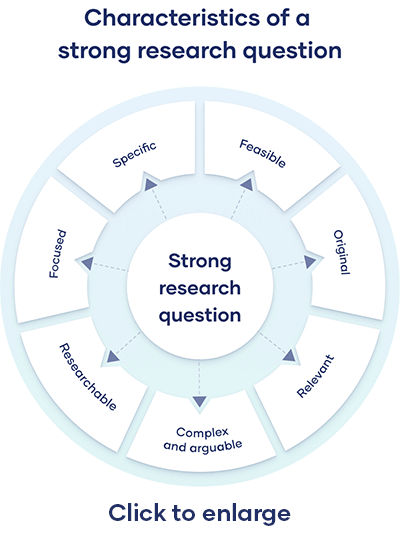How do I know I have a good main research question?
Formulating a main research question can be a difficult task. Overall, your question should contribute to solving the problem that you have defined in your problem statement.
However, it should also fulfill criteria in three main areas:
- Researchability
- Feasibility and specificity
- Relevance and originality



